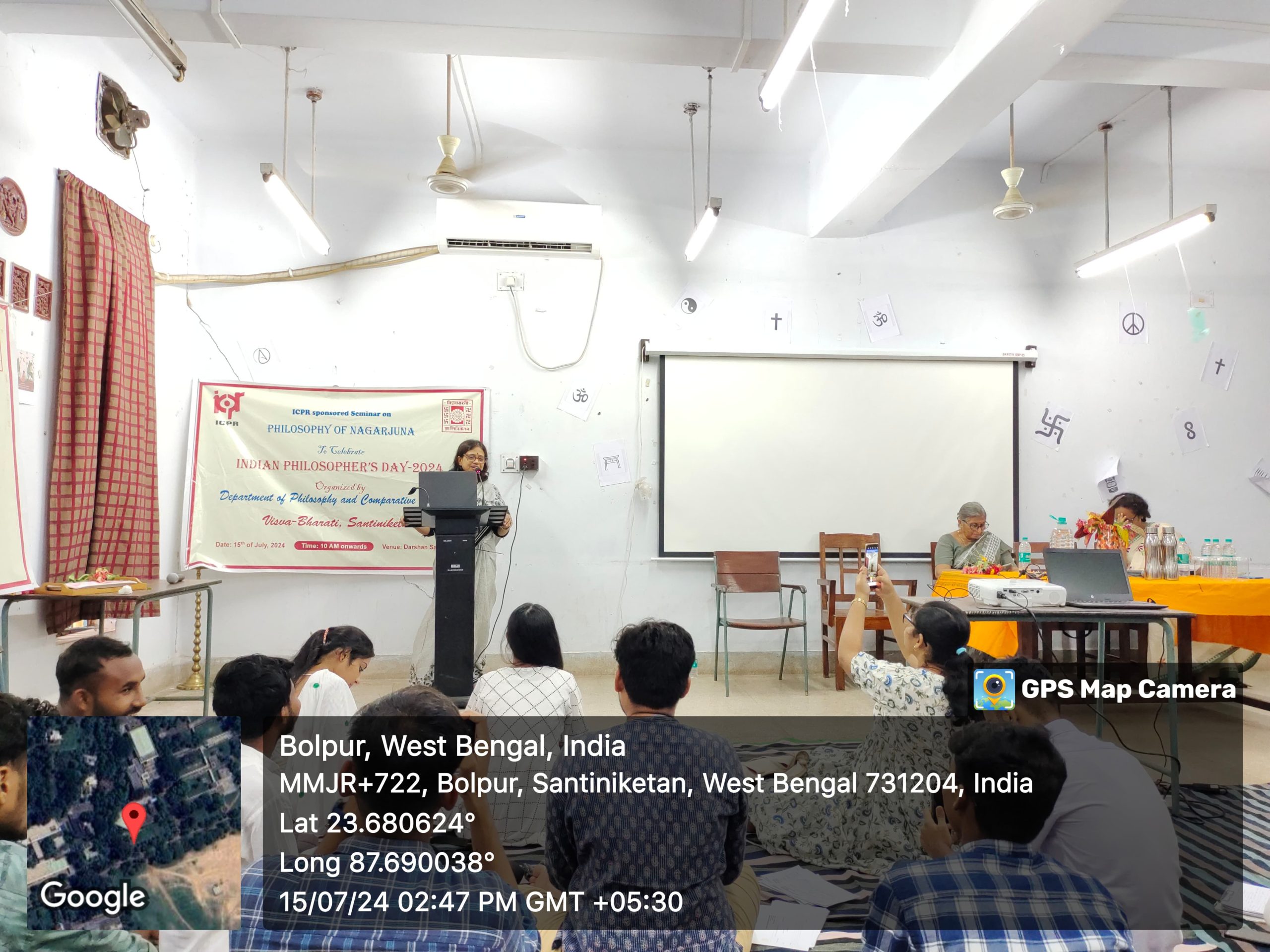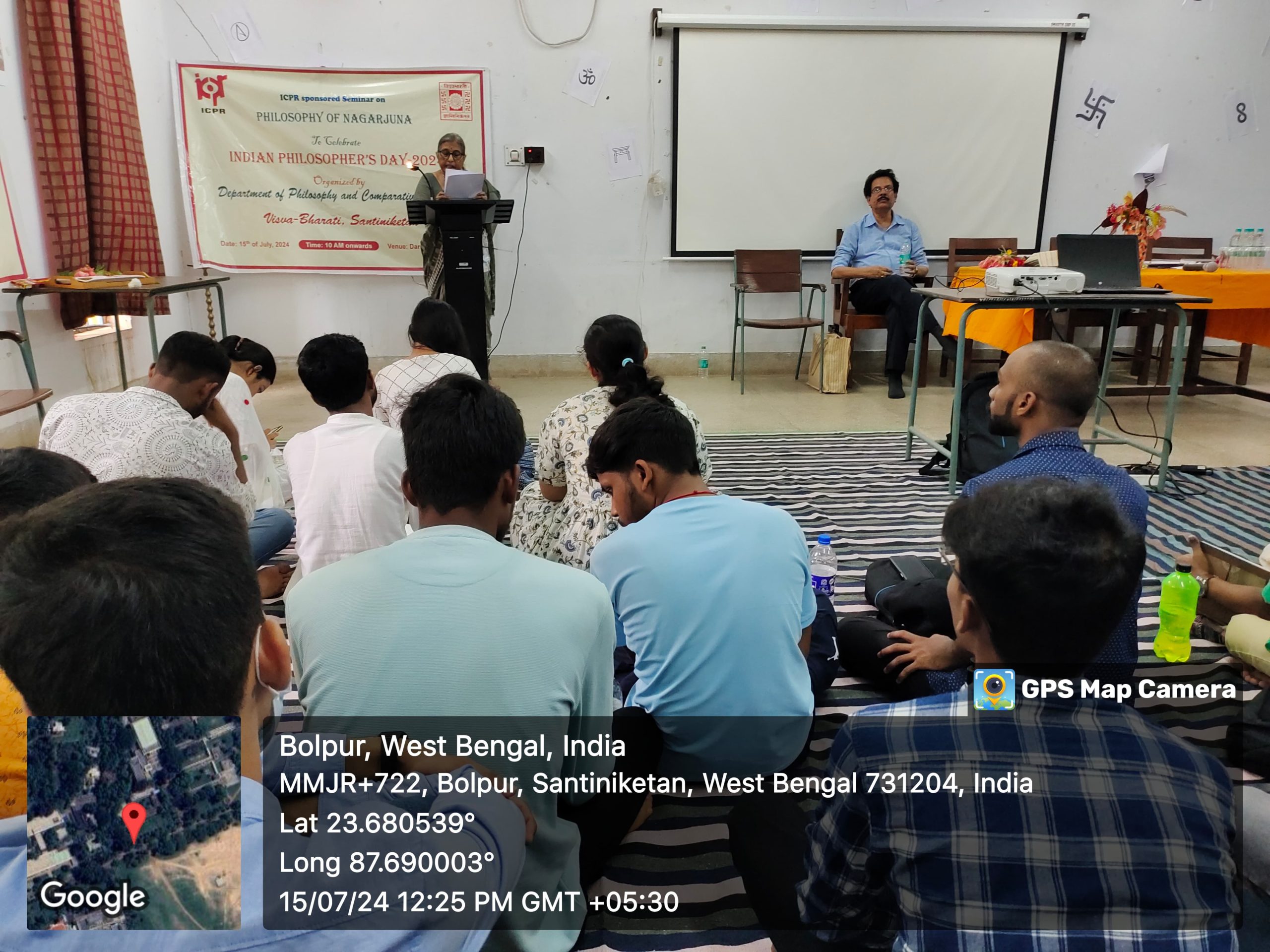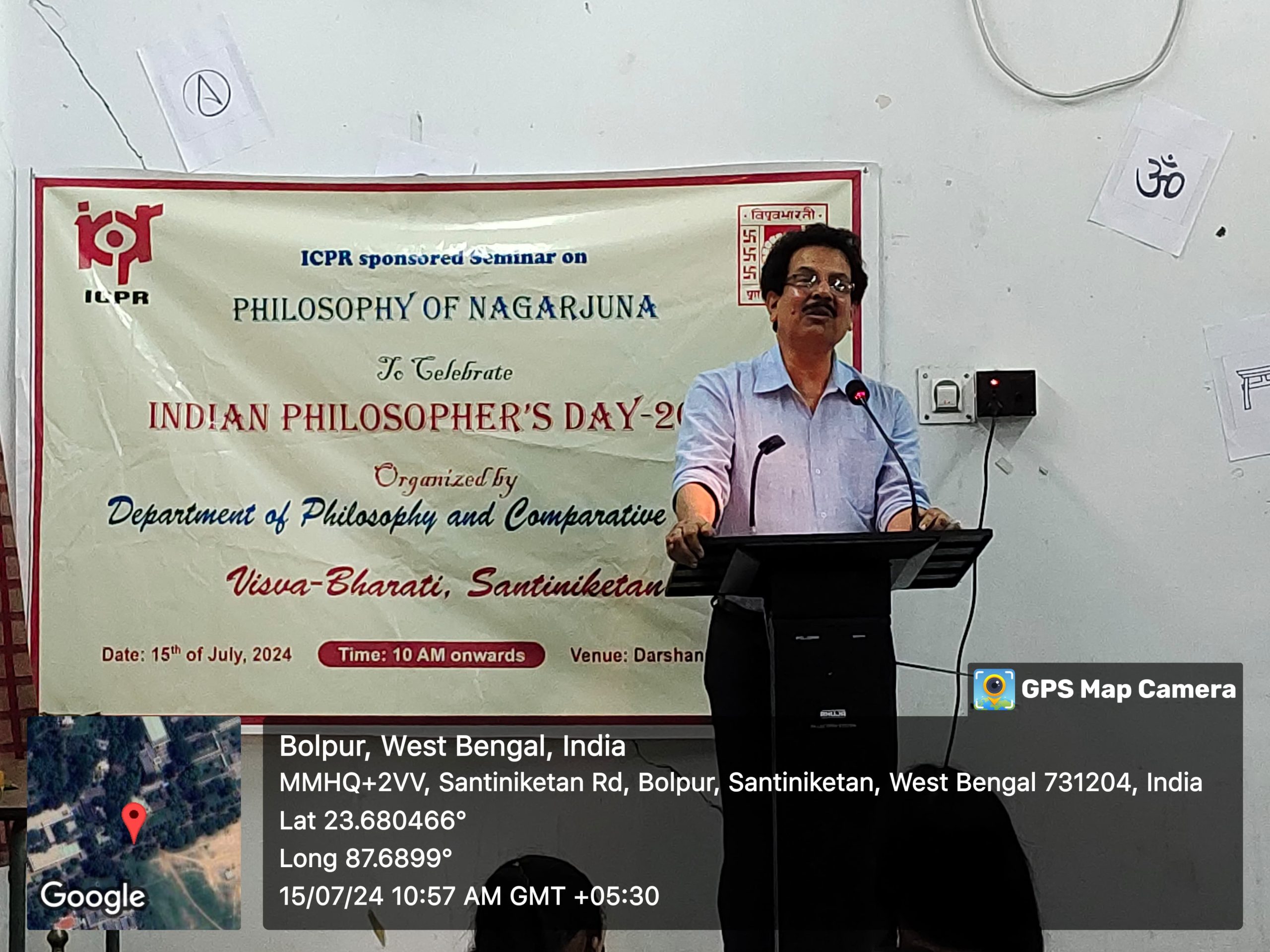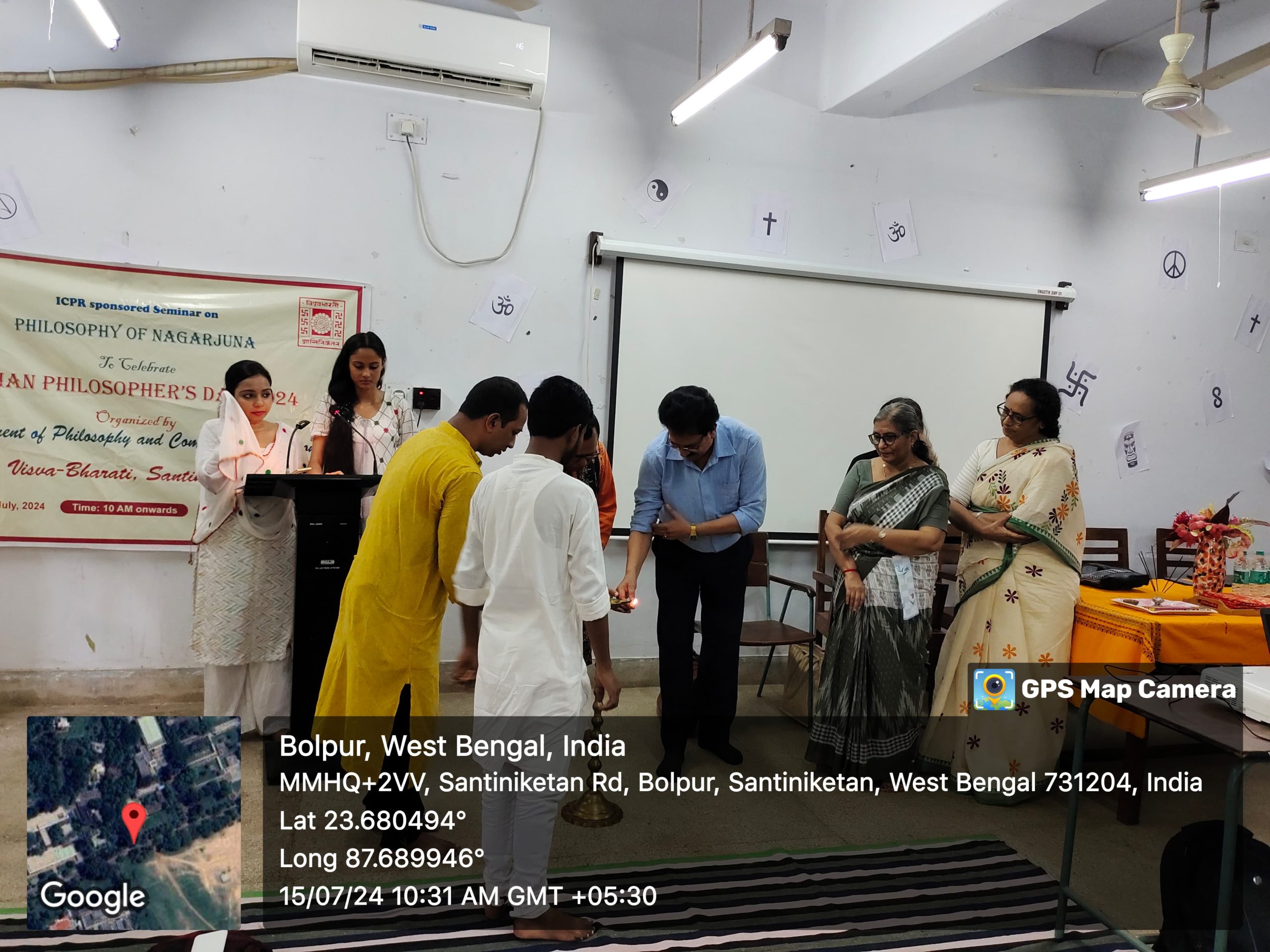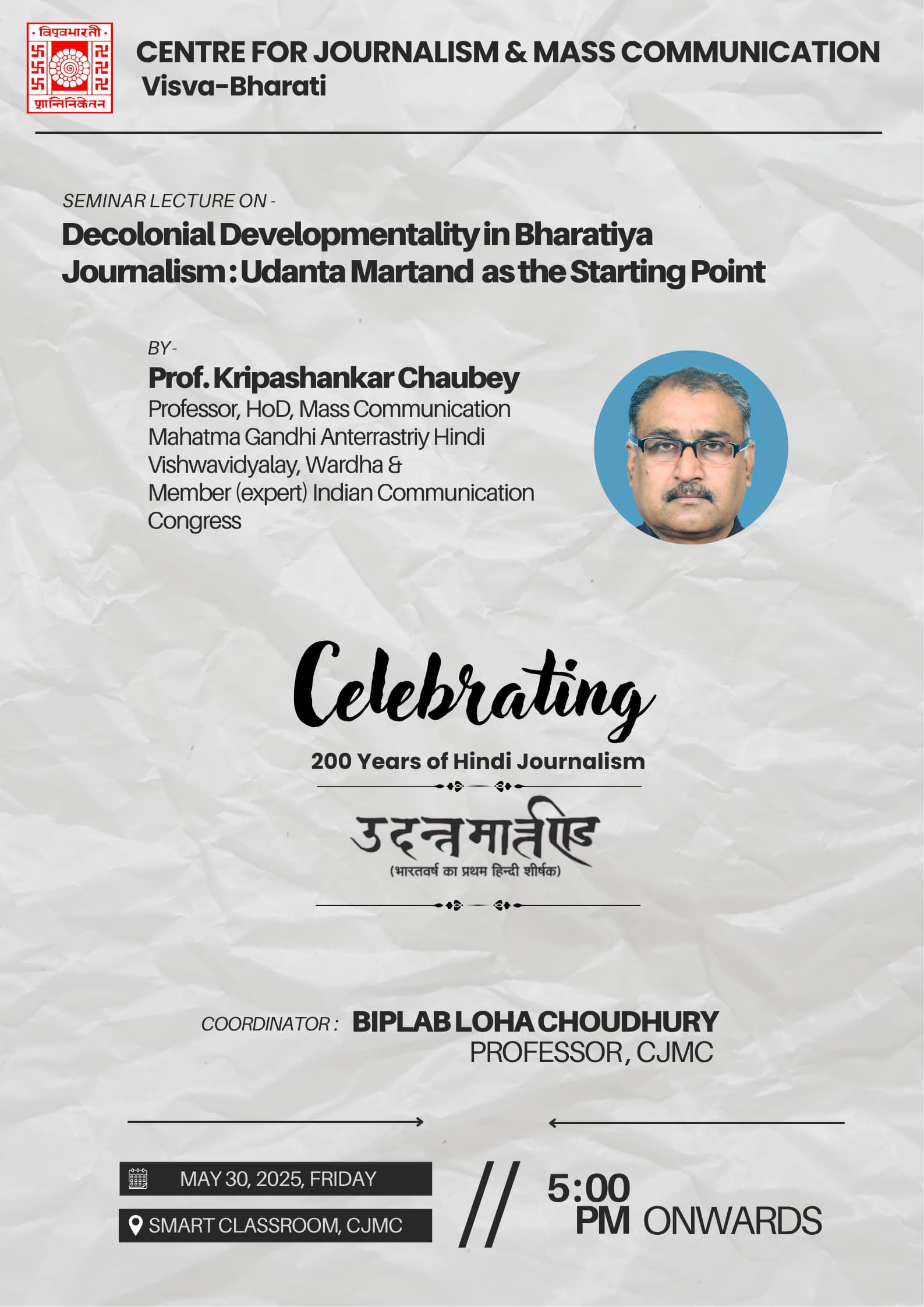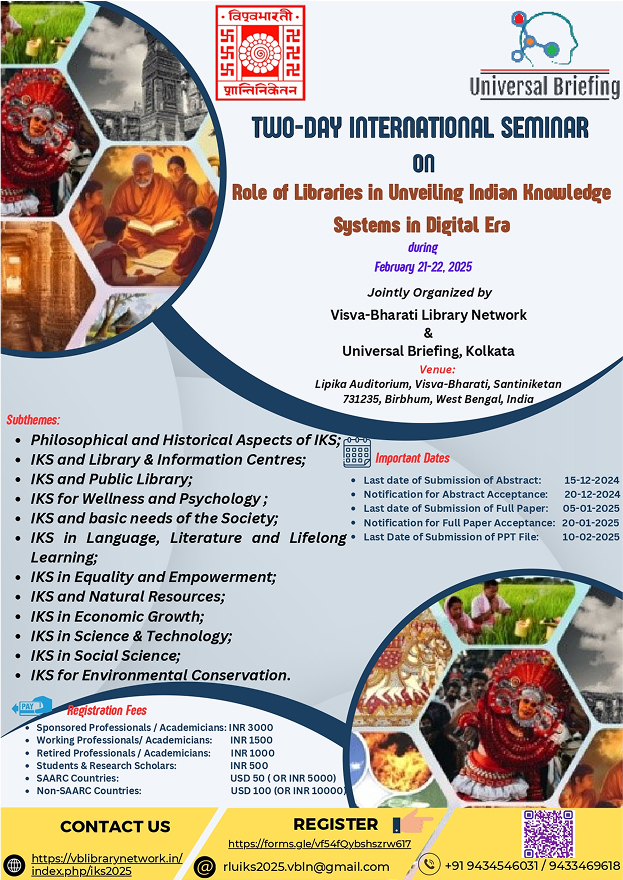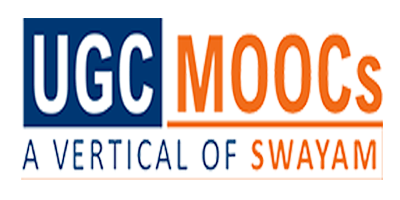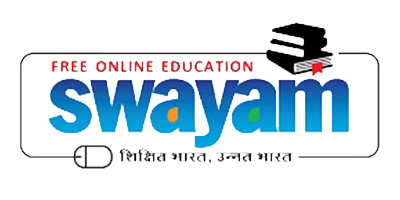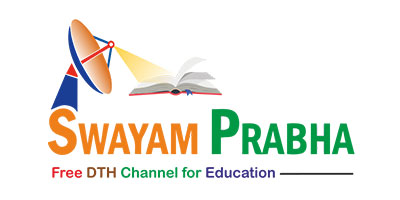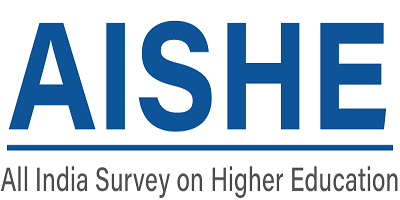
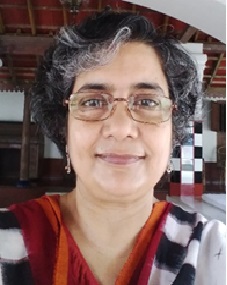
HEAD
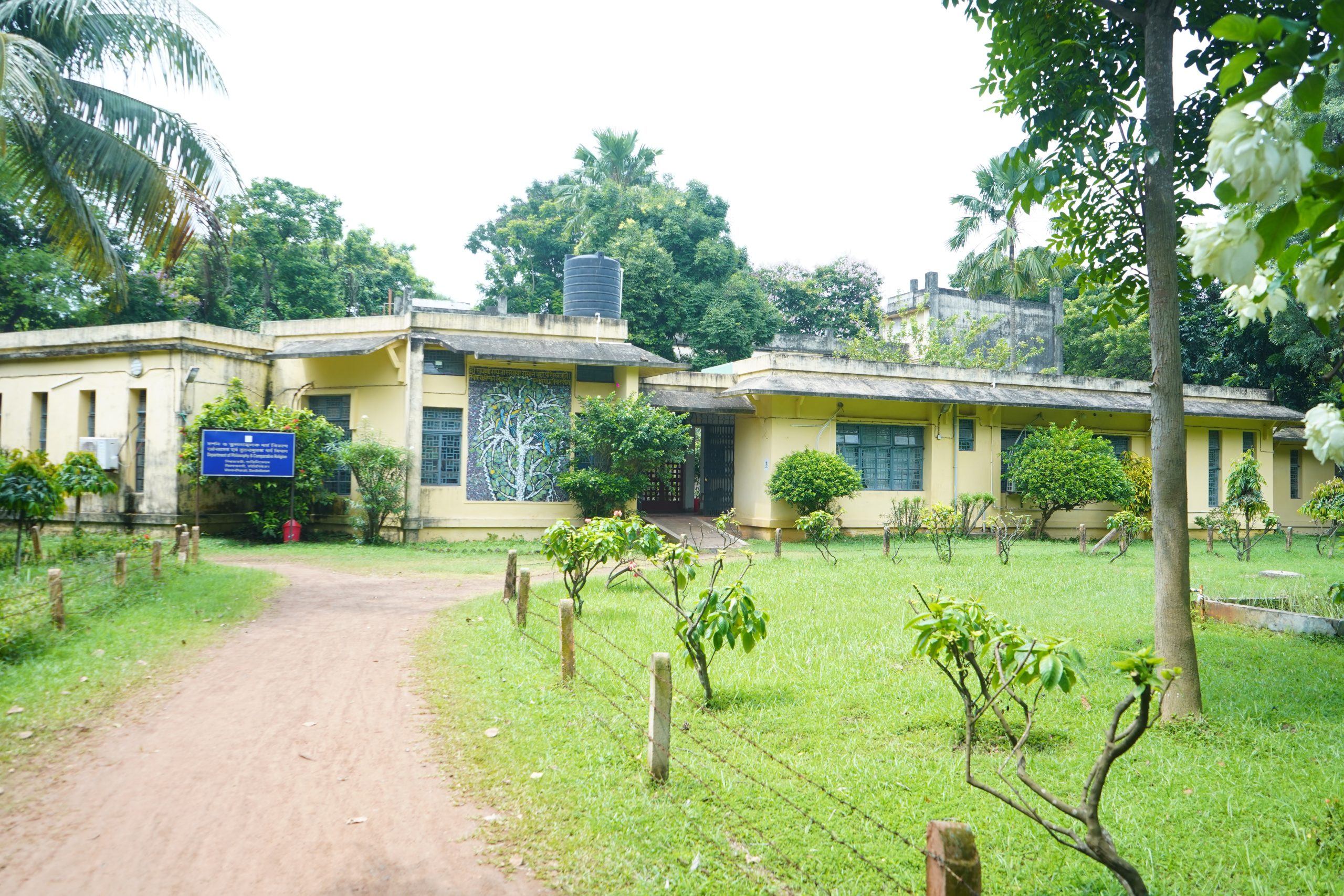
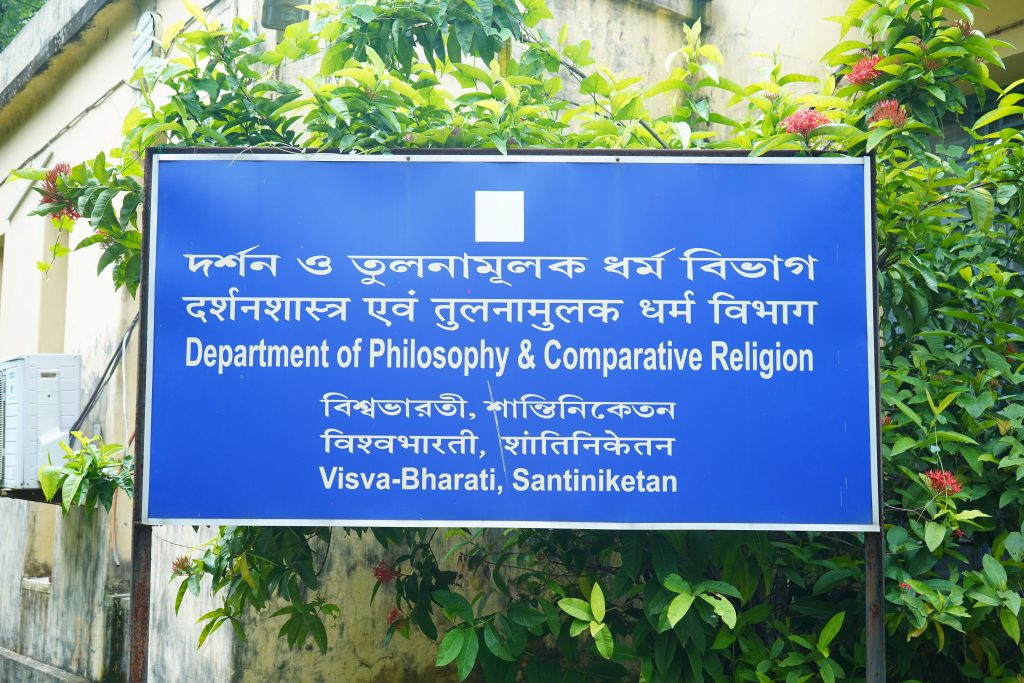
PHILOSOPHY AND COMPARATIVE RELIGION
About The Department
The conceptual foundation of the Department of Philosophy and Comparative Religion was laid as early as in July 1919 when Visva-Bharati was inaugurated as the unique home for all cultures. The programme offered by what was then the Department of Higher Studies included provision for study and research in various aspects of DharmaShastra, Purana and Hindu Religion. With Visva-Bharati becoming a registered public body and adopting a constitution of its own on 23rd December, 1921, the Department of Higher Studies, then renamed Uttar Vibhaga, expanded its academic programme by including Philosophy as an independent area of study besides Logic, Nyaya and Vedanta (Upanisads). The study-cum-research programme in philosophical subjects received a fresh impetus when the academic wing of Visva-Bharati was reconstructed in 1926. In 1951 when Visva-Bharati became a Central University by an Act ofParliament, VidyaBhavana, originally a School of Research, started Undergraduate and Postgraduate courses in a number of subjects including Philosophy and Comparative Religion.That was how today’s Department of Philosophy and Religion came into being. In April, 1964, the Department was converted into a Centre of Advanced Study in Philosophy. The Centre was designed to promote higher studies and research in metaphysics in collaboration with scholars from other universities in and outside the country. The first director of the Centre was Professor Kalidas Bhattacharya, an eminent philosopher himself. The Department received Special Assistance Programme for 5 years from 1985 to 1990. At present, the Department of Philosophy and Comparative Religion has signed an MoU with University of Lausanne, Switzerland, for exchange of one teacher per year from both the ends and one student from the University of Lausanne, Switzerland.The Department is now preparing itself for running UGC-assistance programme in the form of SAP or CAS. Revival of publication of the bi-annual departmental Journal of its own, called The Visva-Bharati Journal of Philosophy, thirty-five Volumes of which have already been published.
Photos
Academic Calendar
Achievements
Alumni Association
Upcoming Seminar
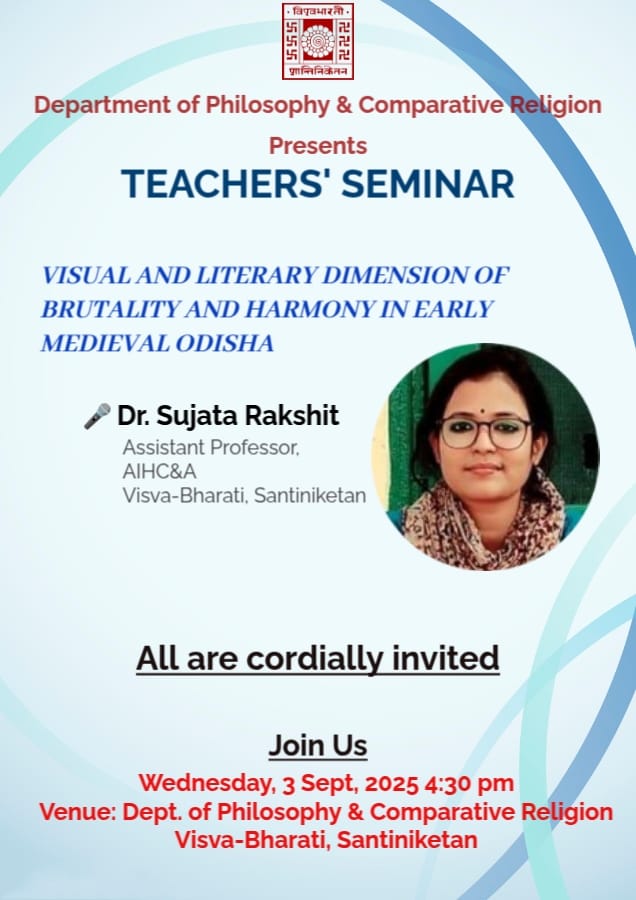
Seminar - 2025
This study will portray three threads of narratives based on textual, epigraphic and art historical sources revealing a more tempestuous reality. First, the rivalries amongst separate religious groups in Bhubaneswar are etched in the Ekamra Purana. This crisis led towards the act of violence where religious symbolisms were converted towards orthodox Brahmanism from Buddhism and Jainism. Second, the establishment of brahminical hegemony using religion as an instrument, in the period of ideological and political conflicts, and ritualistic unrest has also been addressed. Third, the chronicle of toppling the autochthonous Savaras from their territory to appropriate Jagannatha as a state-deity is evident from epigraphic record. Was this only assimilation, integration or simple violence? This coils in the turmoil within politico-religious systems and sees how they intervene in a metaphorical world of tempest. Challenging the recent writings, which are nearly silent on ruthless and forceful acculturation of religion and polity further, highlights the narratives based on nuanced dynamics that shaped the early medieval Odisha.

Seminar - 2025
Climate change is the single most critical planetary threat today. This is evident from an all-time high record reached on all four standard indicators of climate change: increasing greenhouse gas (GHG) concentrations, rising sea level, soaring ocean heat, and growing ocean acidification. Two broad explanatory perspectives on climate change emerge: one from the developed North and the other from the developing South. This paper explores the major causes of climate change, provides a comparative appraisal of the two perspectives, goes beyond them and advances a third perspective that traces the cause of climate change to the flawed vision of development.

Seminar 3 of 2025
Lorem ipsum dolor sit amet, consectetur adipiscing elit. Nunc vulputate libero et velit interdum, ac aliquet odio mattis. Class aptent taciti sociosqu ad litora torquent per conubia nostra, per inceptos himenaeos. Corem ipsum dolor sit amet, consectetur adipiscing elit. Lorem ipsum dolor sit amet, consectetur adipiscing elit. Nunc vulputate libero et velit interdum, ac aliquet odio mattis. Class aptent taciti sociosqu ad litora torquent per conubia nostra, per inceptos himenaeos. Corem ipsum dolor sit amet, consectetur adipiscing elit.

Seminar 4 of 2025
Lorem ipsum dolor sit amet, consectetur adipiscing elit. Nunc vulputate libero et velit interdum, ac aliquet odio mattis. Class aptent taciti sociosqu ad litora torquent per conubia nostra, per inceptos himenaeos. Corem ipsum dolor sit amet, consectetur adipiscing elit.
Lorem ipsum dolor sit amet, consectetur adipiscing elit. Nunc vulputate libero et velit interdum, ac aliquet odio mattis. Class aptent taciti sociosqu ad litora torquent per conubia nostra, per inceptos himenaeos. Corem ipsum dolor sit amet, consectetur adipiscing elit.


